By Sustainable Solano
Want to learn how to apply a waterwise garden template in your own yard? Join Heath Griffith of Grow with the Flow for a Waterwise Garden Design Lab from 10 am-1 pm Saturday, Feb. 24, in Benicia. Learn more and register here.
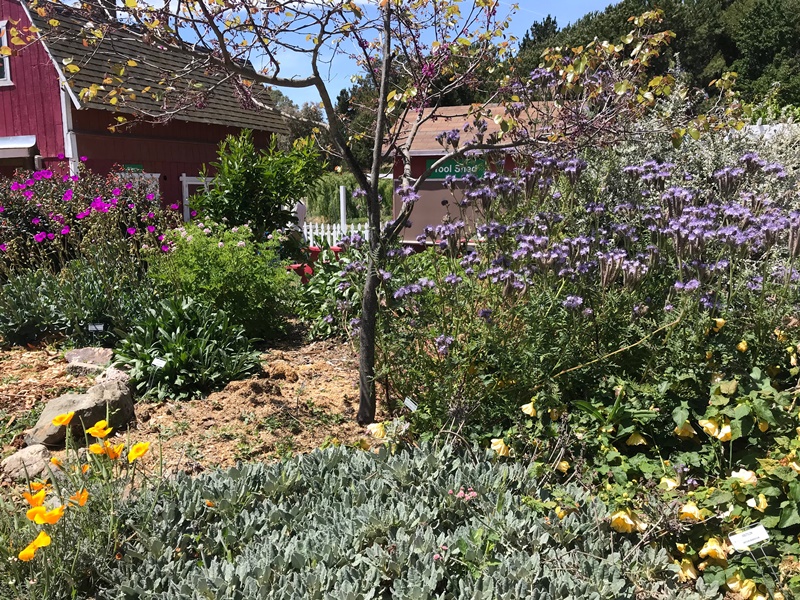
Creating your ideal garden space can be daunting. Even with piles of garden books, maps of hardiness zones, seasonal planting charts and catalogs spread out on the table, it can take an expert eye to know where certain plants will thrive and how they will work together.
A template can be that little lift needed to get you started on reshaping your yard into something beautiful. (And the perfect activity for this time of the year when cold, rainy days staring out of the window give us an opportunity to think of spring!)
That’s why we reached out to Joshua Burman Thayer with Native Sun Gardens. Joshua is a local landscape designer and horticulture consultant who creates ecological landscape designs, has done extensive work with native plants and organic farming, and community-based work around plants and food. He wrote Food Forests for First Timers, an introductory guide to permaculture in the garden.
Joshua shared these four templates, which we are sharing with you in this blog and will include in our plant resources. These free templates give you a quick way to get started, with the basic layout and selection of appropriate plants for each design.
The templates are designed in 100-square-foot “tiles” that can be combined in various ways to create a larger design.
Joshua shared four approaches: desert, edible, Mediterranean and tropical. The desert and Mediterranean designs are waterwise and drought-tolerant, which is appropriate for Solano County summers. Below each design, Joshua offers a brief description of each as well as where in the county these options could thrive best.
Desert
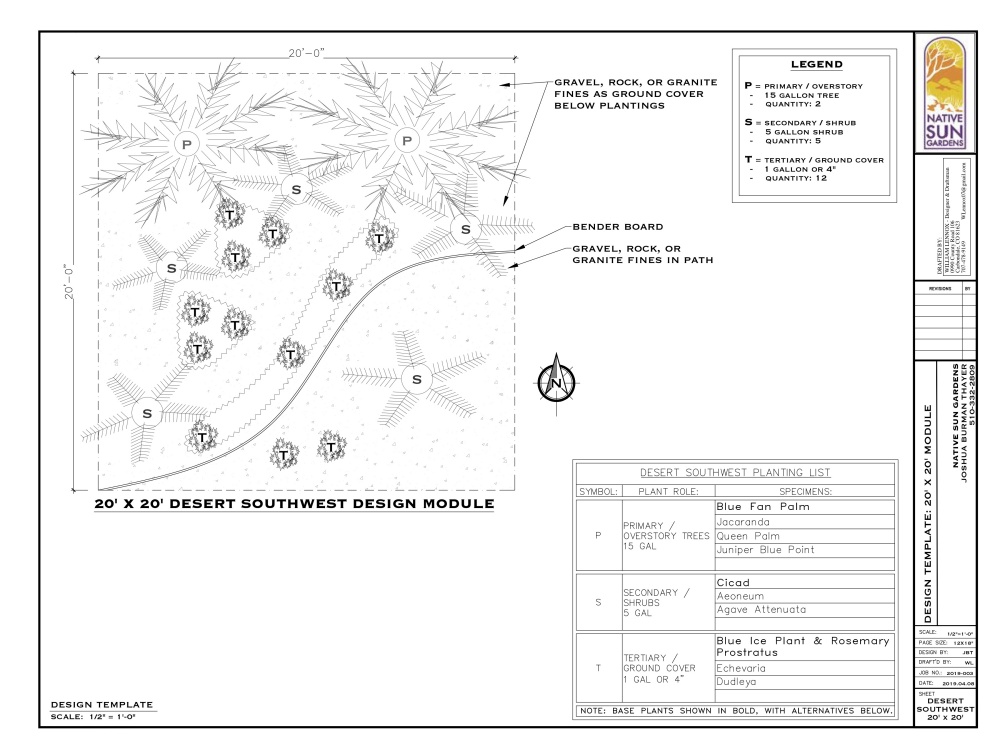
Desert: For those gardeners wanting to try their luck with only minimal hand watering and no weekly irrigation, desert plants can provide a robust plant palette. These plants can acclimate in 2-3 years and then get by on 1-2 waterings by hand per month in the dry season by year 3. Desert plants evolved to withstand great solar intensity and can thrive in sunny parts of Solano County. (Vacaville, Dixon).
Edible
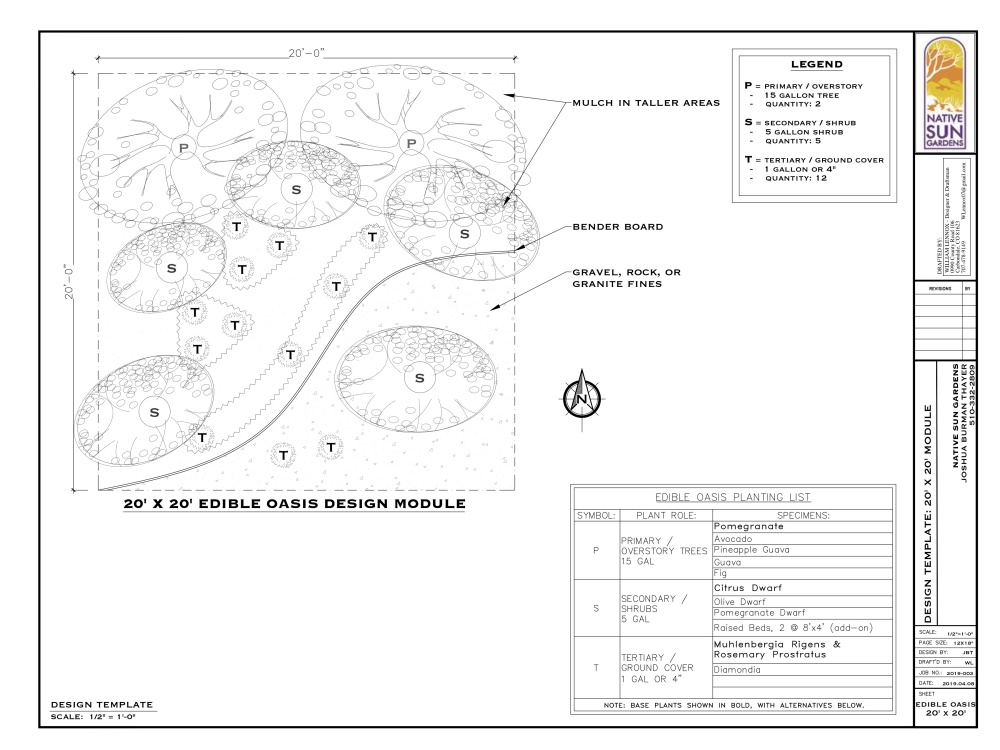
Edible: If you wish to maximize food production in your urban lot, the edible template will show you how to prioritize food for humans at each level of the food forest. This system takes a good amount of water and care, but can also reward with the most food per acre if water is not an issue. (All of Solano County).
Mediterranean
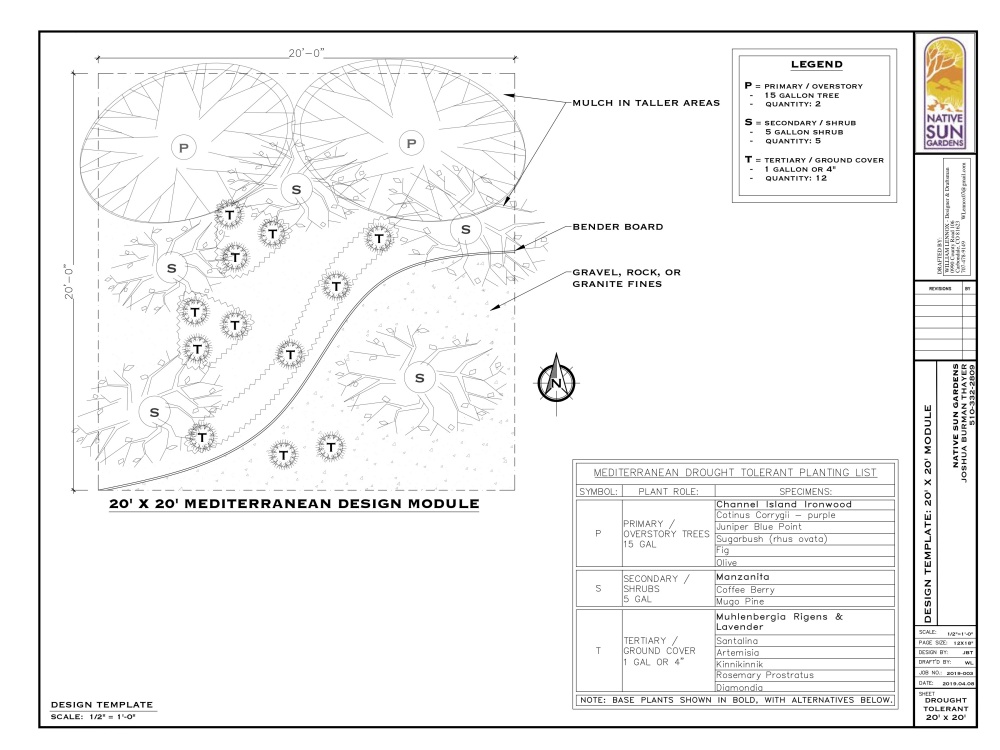
Mediterranean: Mediterranean plants generally do rather well here, because both the Mediterranean region as well as California are between 32 and 38 degrees N latitude and have similar marine-influenced climates. As such, expect many of the Mediterranean edibles to thrive with the seasonality of California’s wet and dry seasons. (All of Solano County).
Tropical
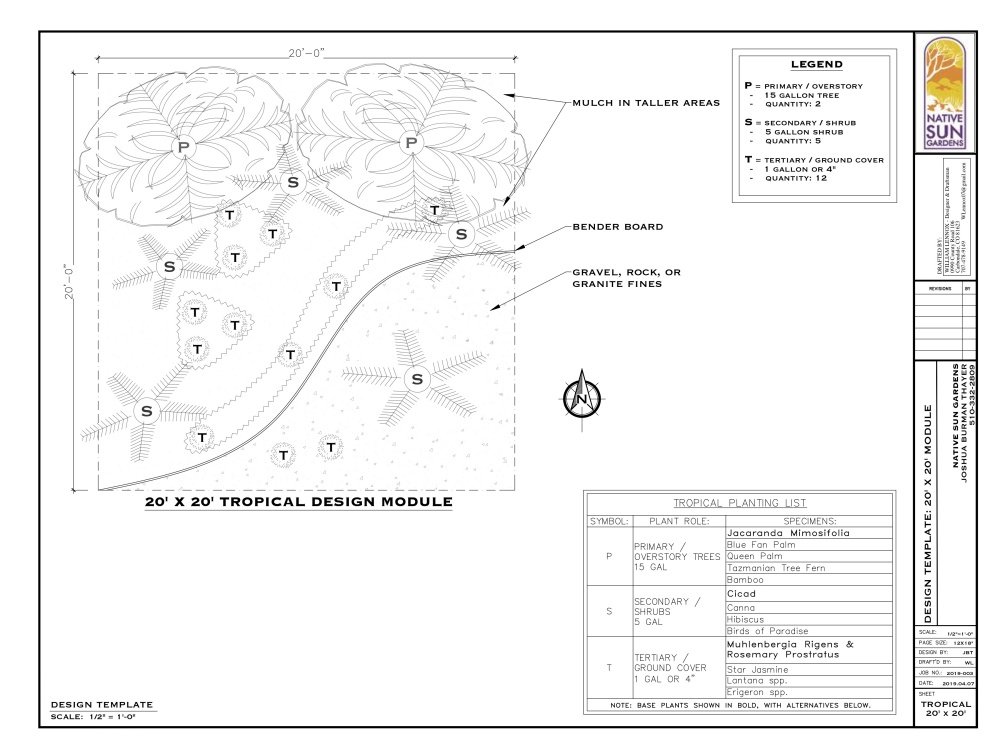
Tropical: Solano County residents near sea level have the blessing of being able to grow food frost-free 12 months of the year. Some winters do test that ability, but generally low lying areas near bodies of water will allow for a microclimate perfect for growing tropical crops. Try the tropical template for fun varieties to your garden. (Suisun City, Benicia, Vallejo, Rio Vista, Fairfield).
If you are interested in learning how to apply a waterwise template to your own yard, join us for the Waterwise Garden Design Lab taught by Heath Griffith of Grow with the Flow on Feb. 24 in Benicia. Registration is free, but seats are limited.
Heath got their Permaculture Design Certificate with Vital Cycles Permaculture, through a course sponsored by Sustainable Solano. Since then, they have worked with Soilogical BioSolutions and Designs, become a Qualified Water Efficient Landscaper, and earned a nationally recognized certificate in Water Harvesting. Heath is driven by a deep passion for reconnecting humans with the landscapes that live and breathe all around us, beginning with water harvesting and sustainable water use.
There are other templates out there. For native plants, we recommend the California Native Plant Society’s Regional Guides, which include plant lists and design templates. You can download the one that suits your environment here.
Have a template you’ve used? Share it with us at info@sustainablesolano.org so we can add it to our list of resources!

